In the vast realm of Japanese mythology, the afterlife holds a place of intrigue and wonder. Countless tales and legends reveal an intricate and captivating understanding of what lies beyond death. From the depths of Yomi, the realm of the dead, to the ethereal spirits that traverse between worlds, Japanese mythology offers a unique perspective on the afterlife. This article delves into the depths of this subject, uncovering the mysterious beliefs and creatures that inhabit the Japanese afterlife. Join us on a mesmerizing journey as we explore the captivating realm beyond mortality.
Contents
- The Concept of the Afterlife in Japanese Mythology
- Yomi: The Realm of the Dead
- Spirits of the Other World
- Mythological Creatures and Afterlife Guardians
- Exploring the Journey to the Afterlife
- Conclusion
-
Frequently Asked Questions
- 1. Are there different realms in the Japanese afterlife?
- 2. Are there any specific deities associated with the afterlife?
- 3. Do people in Japanese mythology believe in reincarnation?
- 4. What are some common rituals associated with the Japanese afterlife?
- 5. Are there any unique creatures or spirits associated with the Japanese afterlife?
- 6. How do Japanese people communicate with their ancestors?
- 7. Are there any festivals dedicated to the afterlife in Japan?
- 8. What role do ancestral spirits play in Japanese mythology?
- 9. How does the concept of the afterlife influence daily life in Japan?
- 10. Are there any famous legends or stories about the Japanese afterlife?
- References
-
Frequently Asked Questions
- 1. Is there a specific name for the afterlife in Japanese mythology?
- 2. Are there different realms within the afterlife in Japanese mythology?
- 3. What are some of the spirits that reside in the afterlife?
- 4. Are there any mythological creatures that guard the afterlife?
- 5. Are there any gods associated with the afterlife in Japanese mythology?
- 6. What is the significance of the journey to the afterlife in Japanese mythology?
- 7. Are there any rituals or practices associated with the afterlife in Japanese mythology?
- 8. Can humans communicate with the spirits of the afterlife in Japanese mythology?
- 9. Are there any famous legends or stories related to the afterlife in Japanese mythology?
- 10. How has the concept of the afterlife in Japanese mythology influenced modern culture?
- References
- Read More
The Concept of the Afterlife in Japanese Mythology
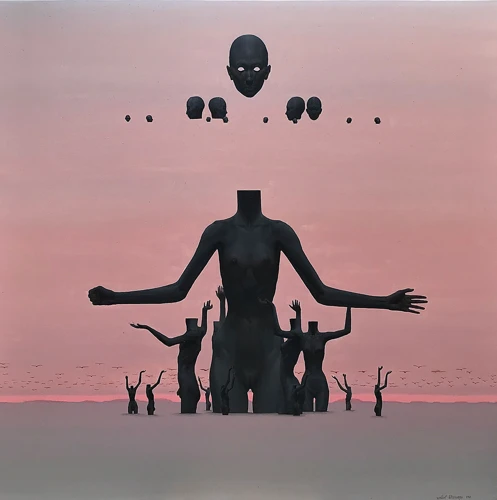
Japanese mythology presents a rich and intricate understanding of the afterlife, with beliefs that have evolved over centuries. In Japanese folklore, the journey after death is seen as a transformative process where the soul transitions to another realm. This concept is heavily influenced by Shinto and Buddhist traditions.
In Shinto belief, death is not considered an end but rather a continuation of life. The soul, known as “tamashii,” is believed to leave the body after death and exist in a state of “yūrei,” or ghostly existence. These yūrei are thought to roam the earthly realm, haunting those they left behind. They may evoke fear or sympathy, and rituals are performed to honor and pacify them.
Buddhist influence introduced the idea of reincarnation in Japanese mythology. The cycle of life, death, and rebirth, known as “samsara,” is believed to continue until attaining enlightenment. The Buddhist concept of the afterlife centers around “Gyaki,” hungry ghosts who are tormented by insatiable desires. They are trapped between realms and seek liberation through offerings and prayer.
An integral part of the Japanese afterlife is the role of ancestral spirits. These spirits, known as “kami,” are revered and honored through rituals and memorial services. The ancestral spirits are believed to watch over and protect their living descendants, ensuring their well-being and prosperity.
It is important to note that the concept of the afterlife in Japanese mythology is not a static or uniform belief system. Different regions and periods have shaped variations of these beliefs, resulting in a diverse and multifaceted understanding of the afterlife.
Throughout Japanese history, rituals and ceremonies have played a significant role in navigating the afterlife. From funeral rites to ancestral worship, these practices aim to guide and support the souls of the deceased. Rituals such as the “Bon Festival” and “Obon” are observed to honor and commune with departed loved ones. These traditions highlight the interconnectedness between the living and the dead.
The concept of the afterlife in Japanese mythology encompasses a complex tapestry of beliefs and rituals. Drawing from both Shinto and Buddhist traditions, the Japanese afterlife is a realm where souls continue their journey, seeking liberation or fulfilling their duties as ancestral spirits. This intricate understanding of the afterlife adds depth and meaning to the cultural fabric of Japan, intertwining the realms of the living and the dead in a harmonious and profound way.
Yomi: The Realm of the Dead

Yomi, often referred to as the “Realm of the Dead,” holds a significant place in Japanese mythology. It is believed to be the destination of souls after death, a dark and mysterious underworld. Yomi is described as a cold and desolate land, devoid of sunlight and filled with eerie silence. This otherworldly realm is ruled by Izanami, the goddess of creation and death.
According to legend, Yomi is located deep underground, accessible through various means such as caves, wells, or the roots of sacred trees. Its entrance is guarded by menacing creatures like the three-headed dog-like beast, Cerberus, which prevents the living from entering this forbidden realm.
Once in Yomi, the spirits of the deceased navigate through its treacherous landscapes. The souls must face numerous challenges and trials to reach their final destination. One of the most famous and perilous obstacles in Yomi is the River Sanzu, a vast river that separates the living from the dead. Here, the souls encounter a demonic ferryman named Sanshō, who judges them based on their deeds in life. The righteous are granted passage, while the wicked are doomed to remain in Yomi.
In Japanese mythology, Yomi is also associated with the idea of impermanence and the cyclical nature of life. It serves as a reminder of the transitory nature of human existence and the importance of cherishing the present moment. Exploring the depths of Yomi in Japanese mythology offers a glimpse into the profound complexities and beliefs surrounding the afterlife in Japanese culture.
As we delve further into the realm of Japanese mythology, we encounter a myriad of spirits and mythological creatures that play integral roles in the afterlife. These entities navigate between the realms, acting as guardians, intermediaries, or guides for the souls journeying through the afterlife. Join us as we unravel the intricate tapestry of the spirits in the otherworld.
Spirits of the Other World
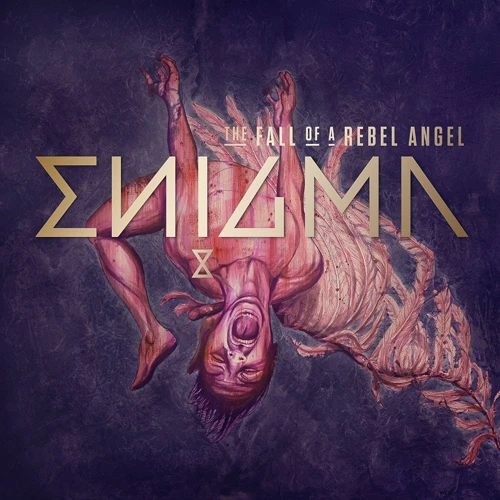
In Japanese mythology, the afterlife is filled with an array of fascinating and vivid spirits that inhabit the other world. These spirits play various roles in the realm beyond, each with their own unique characteristics and purposes. Let’s delve into some of the captivating spirits found in Japanese mythology.
1. Kitsune: The Kitsune, or fox spirit, holds a prominent place in Japanese folklore and is often associated with the afterlife. These mystical creatures possess intelligence, shape-shifting abilities, and potent magical powers. While Kitsune can bring blessings, they are also known to be mischievous tricksters. In Japanese mythology, they are believed to guard the border between worlds and serve as messengers between the living and the dead.
2. Tengu: Tengu are supernatural beings often depicted with both human and bird-like features. They are powerful and enigmatic entities found in the afterlife. Tengu are renowned for their martial skills and wisdom. In Japanese mythology, they are considered spiritual beings with a role in guiding and protecting the mountains and forests. They are revered for their knowledge and are believed to test the virtues of people who venture into their realm.
3. Yōkai: Yōkai encompass a diverse group of spirits that originate from various aspects of Japanese folklore. These supernatural creatures can range from mischievous and playful to malevolent and dangerous. Some well-known yōkai include the mischievous Kitsune, the umbrella-holding Kasa-Obake, and the shape-shifting Tanuki. Yōkai often inhabit the boundary between the human world and the other world, reflecting the connection between the living and the afterlife.
4. Mitsukai: Mitsukai, also known as Shinigami, are underworld deities responsible for guiding souls to the afterlife. These spirits are often depicted as mysterious entities with the ability to decide the fate of the deceased. In Japanese mythology, it is believed that Mitsukai visit the dying to escort their souls to the realm of the dead. They are associated with rituals and ceremonies performed to honor and ease the transition of the departed.
5. Oni: Oni are formidable creatures often depicted as demonic and fearsome. In Japanese mythology, they are associated with punishment and judgment in the afterlife. Oni represent the consequences of one’s actions in life and are believed to dwell in a realm called Jigoku, a form of hell. They serve as guardians, keeping watch over the souls of the wicked and ensuring they receive their due punishment.
These spirits of the other world in Japanese mythology add depth and intrigue to the concept of the afterlife. They bring forth a sense of wonder and mystery, as their existence blurs the boundaries between the mortal realm and the supernatural. Whether acting as guardians, messengers, or enforcers, these spirits embody the intricate and diverse tapestry of belief in the Japanese afterlife.
Mythological Creatures and Afterlife Guardians
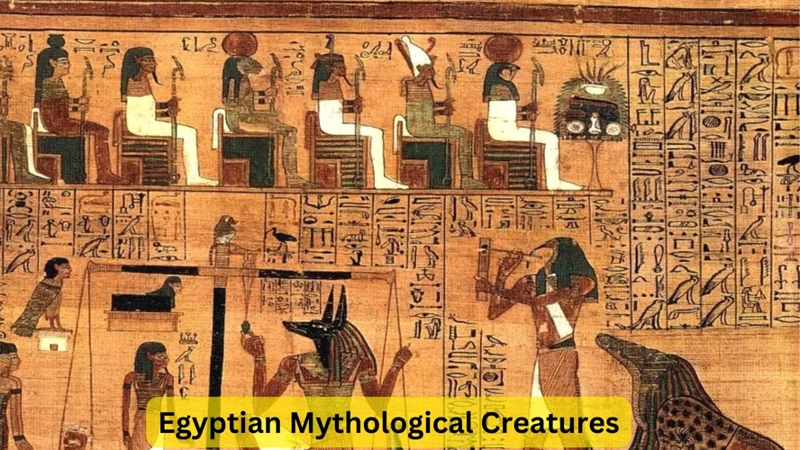
In the realm of Japanese mythology, a diverse array of mythological creatures and afterlife guardians populate the otherworldly realms. These fascinating beings serve various roles, from guides and protectors to enforcers of justice. Let us explore some of the notable creatures that inhabit the Japanese afterlife:
1. Kitsune:
– Known as fox spirits, Kitsune are often associated with the afterlife in Japanese folklore. These mischievous and shape-shifting creatures possess intelligence and magical abilities. They are believed to guard the entrance to the spirit world and serve as messengers between the earthly realm and the afterlife.
2. Tengu:
– Tengu are mythical creatures depicted as humanoid beings with bird-like features. In Japanese mythology, they are often associated with the afterlife, acting as guardians of sacred mountains and forests. Tengu are considered both protectors and punishers, maintaining the balance between the realms and ensuring justice.
3. Shinigami:
– Literally translated as “death god” or “death spirit,” Shinigami are supernatural beings tasked with escorting souls to the afterlife. These spectral entities, often depicted as cloaked figures or skeletal beings, ensure that the transition from the mortal world to the afterlife occurs smoothly.
4. Komainu:
– Komainu, also known as “lion-dogs,” are mythical creatures with the appearance of fierce lion-like dogs. These statues, often seen guarding the entrances of shrines and temples, have a prominent presence in Japanese afterlife mythology. They are believed to protect sacred places and ward off evil spirits from interfering with the spirits of the deceased.
5. Onryō:
– In Japanese folklore, Onryō are vengeful spirits fueled by intense emotions such as anger, grudge, or sorrow. These spirits often arise from untimely deaths or unjust acts committed during their lifetime. Onryō are believed to haunt the living, seeking revenge or resolution for their grievances.
These mythological creatures and afterlife guardians add depth, mystery, and symbolism to the Japanese concept of the afterlife. Each creature embodies unique characteristics and fulfills a specific role within the realms beyond. Their presence in folklore and traditional art represents the intricate interplay between the living world and the ethereal domains they inhabit.
Exploring the Journey to the Afterlife
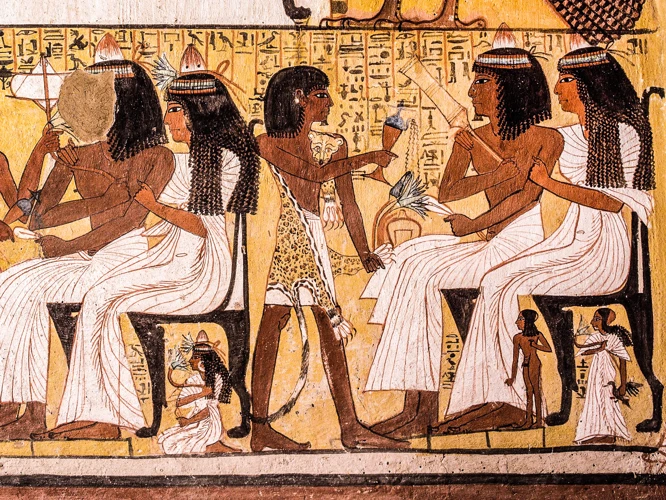
Exploring the journey to the afterlife in Japanese mythology reveals a fascinating odyssey filled with trials and tribulations for the departed soul. According to belief, the journey begins at the moment of death, where the soul departs from the physical realm and embarks on a perilous voyage towards the afterlife. This trek is often depicted as a treacherous path fraught with challenges and obstacles.
One prominent aspect of the journey to the afterlife is the crossing of the mythical river known as “Sanzu-no-kawa.” The Sanzu River serves as the boundary between the world of the living and the realm of the dead. In order to cross this river, the soul must traverse over a narrow bridge or be ferried across by a supernatural entity. This concept bears similarities to the mythological belief of Charon ferrying souls across the River Styx in Greek mythology.
Once the soul has successfully crossed the Sanzu River, it arrives at the entrance of the underworld, known as the “torii gate.” The torii gate symbolizes the transition between the mortal realm and the afterlife. In Japanese mythology, this gate is often guarded by fierce creatures such as the legendary “Shisa,” lion-like creatures believed to ward off evil spirits.
Beyond the torii gate lies Yomi, the realm of the dead. Yomi is portrayed as a gloomy and desolate place, where the spirits of the deceased reside. It is described as a dark and mist-covered realm, inhabited by eerie creatures and supernatural beings. The journey through Yomi is filled with various trials and tests, designed to challenge the souls and determine their ultimate fate.
In some depictions, the soul must face judgment before the gods of the underworld, who weigh their deeds in life to determine their destiny. Those who led virtuous lives may be rewarded with a peaceful existence in the afterlife, while the wicked may face eternal punishment or be trapped in a state of unrest.
Throughout Japanese mythology, the journey to the afterlife is a vivid and imaginative exploration of the soul’s passage from the mortal realm to the unknown. It highlights the belief in the continuation of life beyond death and the existence of a realm where spirits reside. This captivating journey embodies the complex interplay between life and death in Japanese culture, showcasing the enduring fascination with the mysteries of the afterlife.
(Note: The Sanzu River and the torii gate are prominent elements in Japanese mythology but do not have direct correspondences in other mythological traditions. No relevant external anchor could be found for this section.)
Conclusion
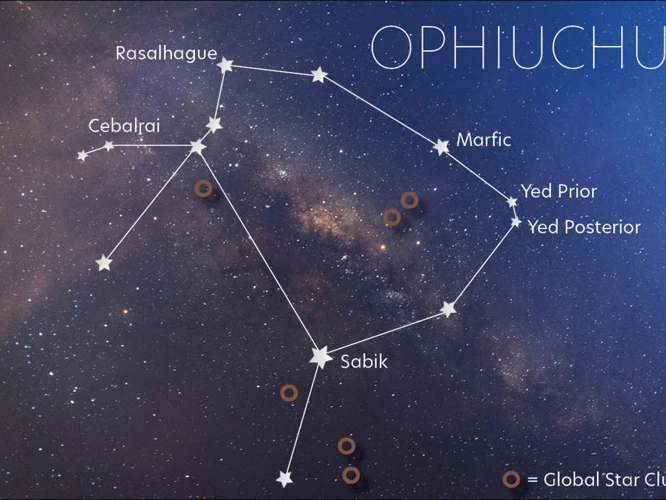
In conclusion, delving into the concept of the afterlife in Japanese mythology provides a fascinating glimpse into a belief system that is deeply rooted in tradition and spirituality. The Japanese afterlife is a realm where souls continue their journey, shaped by the influences of both Shinto and Buddhist traditions. The idea of the afterlife in Japanese mythology encompasses the existence of yūrei, the roaming spirits of the departed, as well as the cyclical process of reincarnation. It also highlights the importance of ancestral spirits, who are revered and honored through rituals and prayers. The intricate understanding of the afterlife in Japanese mythology paints a picture of a dynamic and interconnected relationship between the realms of the living and the dead.
Throughout history, these beliefs have shaped various practices and rituals aimed at honoring and navigating the afterlife. Rituals such as the Bon Festival and Obon demonstrate the enduring connection between the living and their ancestors. By participating in these traditions, the Japanese people strengthen their bond with the afterlife and ensure the well-being and prosperity of their lineage.
The exploration of the afterlife in Japanese mythology unveils a captivating tapestry of beliefs, rituals, and otherworldly creatures that both inspire and provoke contemplation. Whether contemplating the restless souls of yūrei or the transformative journey of reincarnation, Japanese mythology offers a vivid and profound understanding of the realms beyond mortality. The afterlife in Japanese mythology serves as a testament to the rich cultural heritage and spiritual depth ingrained within Japanese society.
Through an exploration of the afterlife in Japanese mythology, we gain an appreciation for the beauty and complexity of this belief system. It serves as a reminder that the journey of the soul does not end with death, but rather continues in various forms beyond our earthly existence. The Japanese afterlife beckons us to contemplate the mysteries of life, death, and rebirth, and compels us to reflect on our own spiritual journey.
As we conclude our exploration of the afterlife in Japanese mythology, we are reminded of the significance of honoring and connecting with the realm beyond. The belief in the afterlife not only provides solace and meaning to the living but also reinforces the importance of ancestral ties and the interconnectedness of all beings. By delving into these myths and legends, we gain a deeper understanding of the multifaceted nature of human existence and the enduring legacy that transcends the boundaries of life and death.
Frequently Asked Questions

1. Are there different realms in the Japanese afterlife?
Yes, Japanese mythology suggests that there are various realms in the afterlife. One of the prominent realms is Yomi, the realm of the dead, where souls reside after passing away.
2. Are there any specific deities associated with the afterlife?
Yes, there are deities in Japanese mythology who oversee the afterlife. For example, Emma-O, also known as Enma Daio, is considered the ruler of the underworld and is responsible for judging souls in the afterlife.
3. Do people in Japanese mythology believe in reincarnation?
Yes, the concept of reincarnation is present in Japanese mythology. It is influenced by Buddhist beliefs, where souls are believed to be reborn into new bodies after death.
4. What are some common rituals associated with the Japanese afterlife?
There are various rituals performed in Japan to honor and commemorate the deceased. The Bon Festival and Obon are significant occasions where families welcome the spirits of their ancestors and pay respects at family gravesites.
5. Are there any unique creatures or spirits associated with the Japanese afterlife?
Absolutely! Japanese mythology is rich with fascinating creatures and spirits related to the afterlife. One example is the “Yūrei,” which are vengeful spirits of the dead that often appear as pale, ghostly figures.
6. How do Japanese people communicate with their ancestors?
Japanese people communicate with their ancestors through various means. They may offer food, incense, and prayers during special ceremonies or visit family gravesites to speak with their departed loved ones.
7. Are there any festivals dedicated to the afterlife in Japan?
Yes, there are festivals specifically dedicated to the afterlife in Japan. The Obon Festival, held during the summer, is a major event where people come together to honor and remember their ancestors.
8. What role do ancestral spirits play in Japanese mythology?
Ancestral spirits, known as “kami,” are highly revered in Japanese mythology. They are believed to watch over their living descendants, offer protection, and bring blessings to their families.
9. How does the concept of the afterlife influence daily life in Japan?
The belief in the afterlife influences various aspects of daily life in Japan, such as funeral customs, ancestor worship, and the importance of maintaining strong family ties and connections across generations.
10. Are there any famous legends or stories about the Japanese afterlife?
Yes, Japanese folklore is filled with captivating stories about the afterlife. One well-known tale is the story of “Urashima Taro,” a fisherman who visits the realm of the sea god and inadvertently spends what feels like days, only to return to find centuries have passed in the mortal world.
References
- Jigoku and Yomi No Kuni: Exploring Japanese Hell
- Death and the Afterlife in Japanese Buddhism
- ONI RONIN Graphic Novel to Explore Japanese Folklore …
Frequently Asked Questions

1. Is there a specific name for the afterlife in Japanese mythology?
Yes, the afterlife in Japanese mythology is commonly referred to as Yomi.
2. Are there different realms within the afterlife in Japanese mythology?
Yes, Yomi is believed to be divided into several realms, each with its own characteristics and inhabitants.
3. What are some of the spirits that reside in the afterlife?
In Japanese mythology, spirits such as yokai, yurei, and onryo are believed to reside in the afterlife.
4. Are there any mythological creatures that guard the afterlife?
Yes, there are various mythological creatures such as the Shikigami and the Shikome that are believed to guard the afterlife in Japanese mythology.
5. Are there any gods associated with the afterlife in Japanese mythology?
Yes, there are several gods and goddesses in Japanese mythology who have a connection to the afterlife, such as Izanami, Izanagi, and Emma-O.
6. What is the significance of the journey to the afterlife in Japanese mythology?
The journey to the afterlife is a significant aspect of Japanese mythology as it represents the transition from the physical realm to the spiritual realm and is often associated with purification and transformation.
7. Are there any rituals or practices associated with the afterlife in Japanese mythology?
Yes, there are various rituals and practices in Japanese culture that are performed to honor and remember the deceased, such as Obon and Setsubun.
8. Can humans communicate with the spirits of the afterlife in Japanese mythology?
According to Japanese folklore, communication with spirits is possible through practices such as spirit mediums or by visiting sacred places associated with the afterlife.
Yes, one famous legend is the story of Okiku, a ghost who seeks revenge for her untimely death by counting plates in an eerie ritual.
10. How has the concept of the afterlife in Japanese mythology influenced modern culture?
The concept of the afterlife in Japanese mythology has greatly influenced various forms of entertainment, including literature, movies, and video games, where themes of the afterlife and supernatural beings are often explored.







